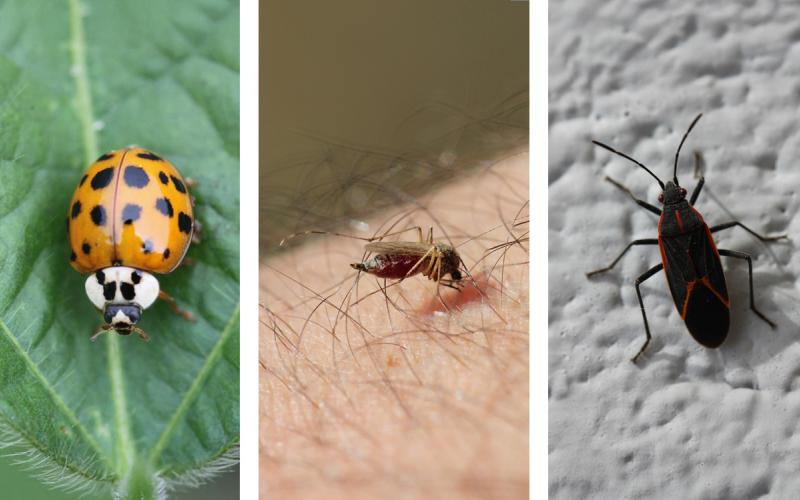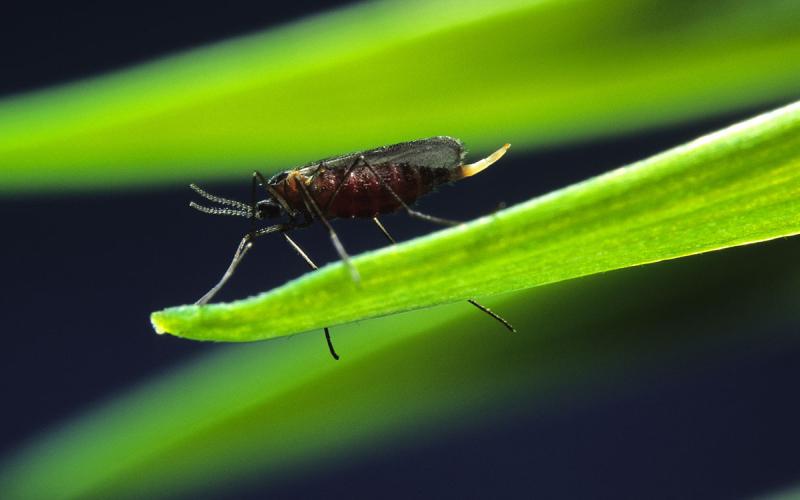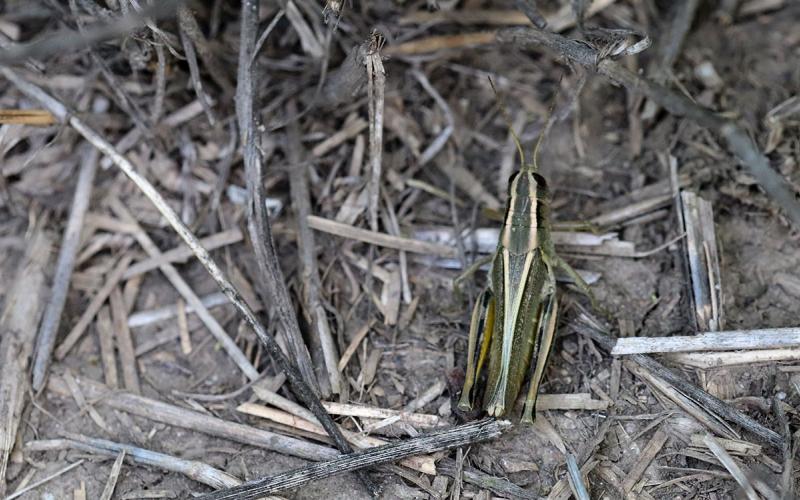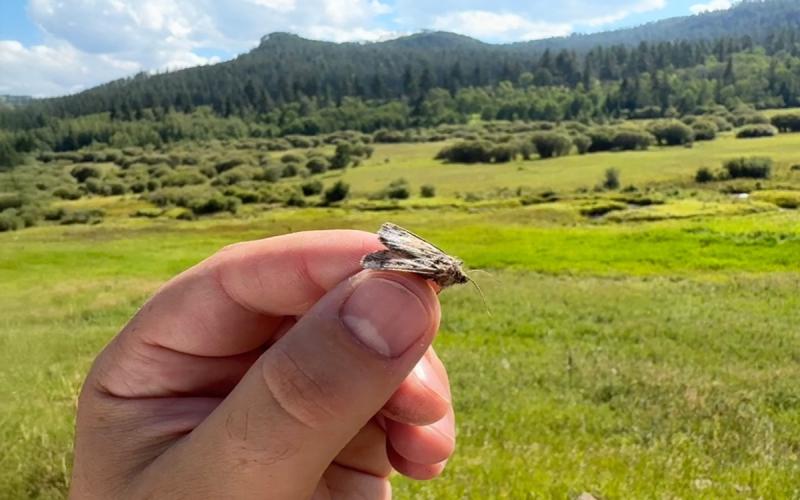
Written collaboratively by Patrick Wagner, Adam Varenhorst, Philip Rozeboom, and Bradley McManus.
Mass populations of army cutworm moths are being reported to entomologists at South Dakota State University. Thus far, these migratory swarms have only been observed in far western South Dakota, particularly within the Black Hills (Figure 1). As the season progresses, the moths will continue to migrate towards central and eastern South Dakota. The primary agronomic concern with army cutworms during this time of year is in newly planted winter wheat fields. Army cutworm moths will lay eggs that can hatch quickly, and the emerging caterpillars then feed on wheat seedlings until the first hard frost.
Identification
Army cutworm moths are noted for having tan and brown colored wings that have a light-colored circle (dot) that is present above a light-colored boomerang (Figure 2). Young caterpillars are small and are generally a light green-brown color with relatively few markings. As the caterpillars mature, they develop a dull gray or gray-brown body that may have mottling (spots or smears of varying colors). Older caterpillars will have several pale stripes that run the length of their bodies. Regardless of age, the caterpillars have a light brown head (Figure 3).
Moths
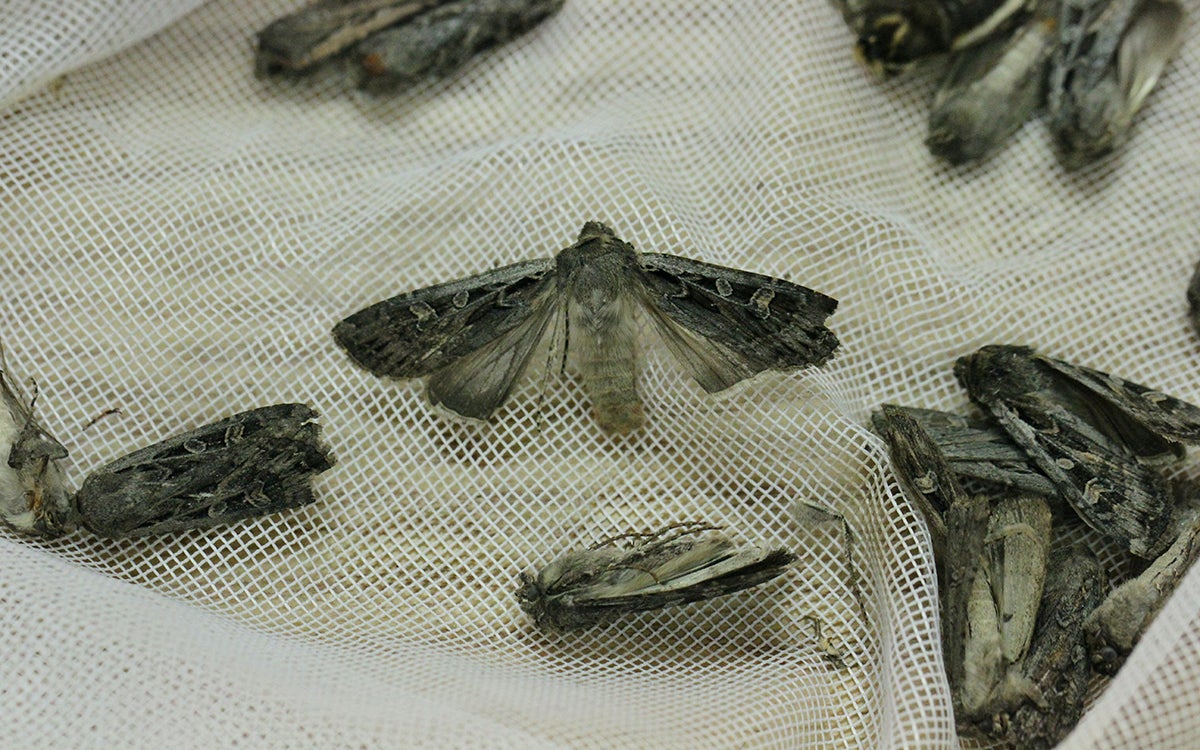
Caterpillars
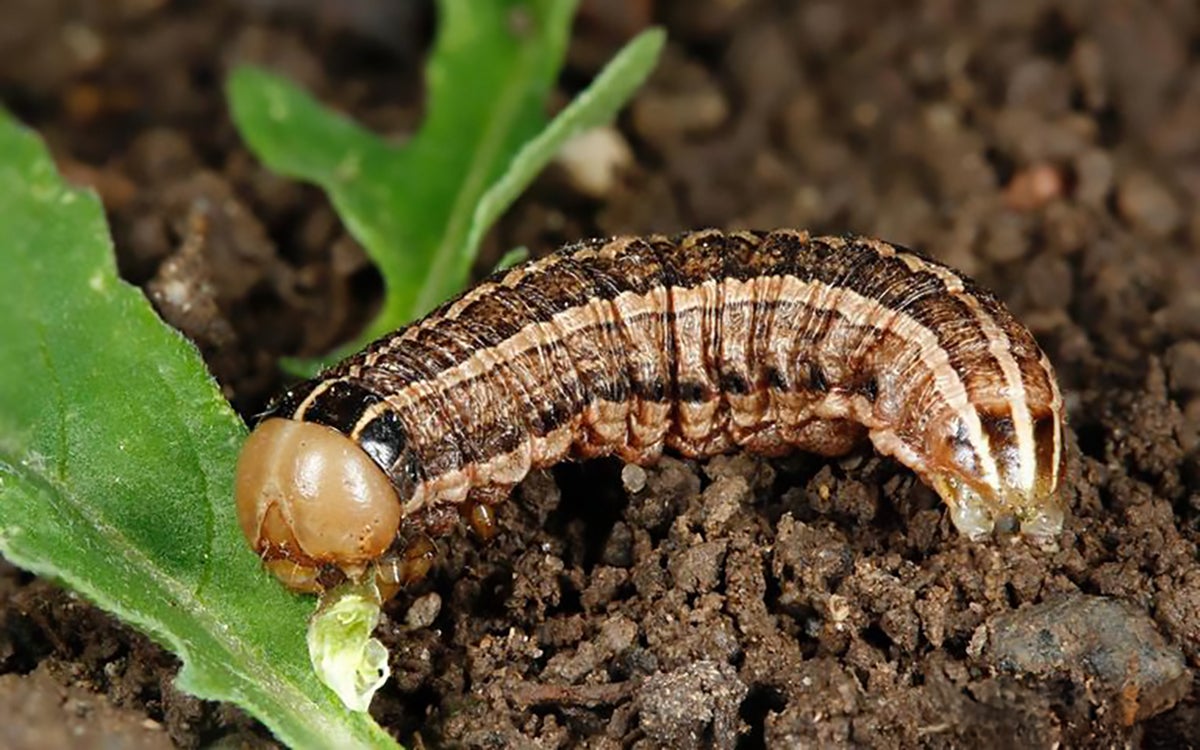
Lifecycle
The army cutworm is a migratory insect that travels between the Great Plains and the Rocky Mountains each year. In the spring, army cutworm moths migrate west from the plains where the caterpillars feed on crops and other vegetation. The moths move to the Rocky Mountains where they spend the summer feeding on nectar from wildflowers in the high elevations. Between August and October, the moths leave the mountains and fly back to the plains. They lay eggs in freshly cultivated weedy fields or in recently seeded winter wheat fields. The eggs hatch and the caterpillars will feed on the plant hosts until they are forced into the soil due to colder temperatures. The caterpillars remerge in the spring and will feed on available vegetation until they pupate in the soil. The moths begin emerging in late May or early June depending on the weather.
Frequent rain events this summer and favorable conditions, especially in the nearby Bighorn Mountains of Wyoming, likely resulted in high survival rates of army cutworm moths. These populations are now migrating back east into South Dakota.
Scouting and Management
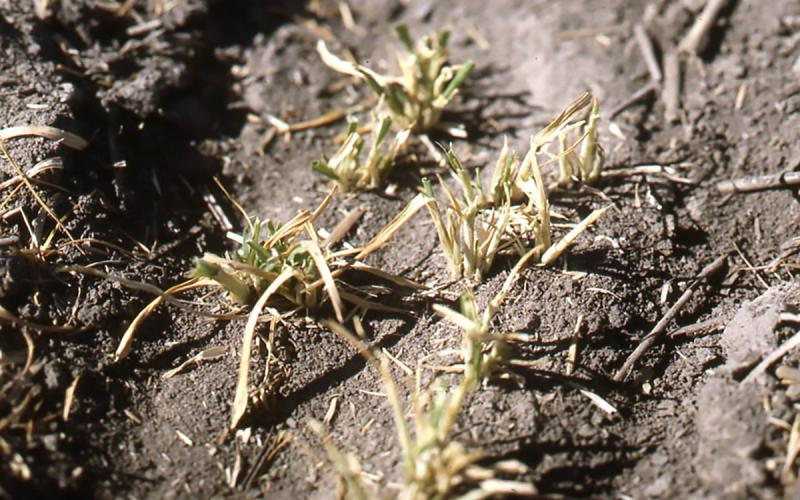
Army cutworm caterpillars feed at night and hide just below the soil surface during the day. Scouting for the caterpillars can be time-intensive due to sampling soil. Therefore, we recommend management decisions based on caterpillar detection and characteristic plant injury.
The feeding is characterized as “clipping” where the caterpillars feed on the plant near the soil surface. This type of feeding can result in patches of plants that appear to be cut or clipped (Figure 4). For winter wheat, the caterpillars tend to feed on the tender blades. Army cutworms generally do not feed on the stem, crown or meristematic tissues, which allow plant regrowth to occur.
In areas where caterpillars are abundant, they will move from food-source to food-source in mass, or “army style.” Management is recommended if patches of the field have been defoliated, or if 2 to 4 army cutworm caterpillars are observed per square foot. As winter approaches, the caterpillars will eventually go into dormancy. However, scouting will need to continue next spring as the caterpillars will reemerge once the soil warms up and begin actively feeding again. If management of army cutworm is necessary, an insecticide application is recommended. Please refer to the latest South Dakota Pest Management Guide - Wheat for a list of products labeled for cutworm management.
